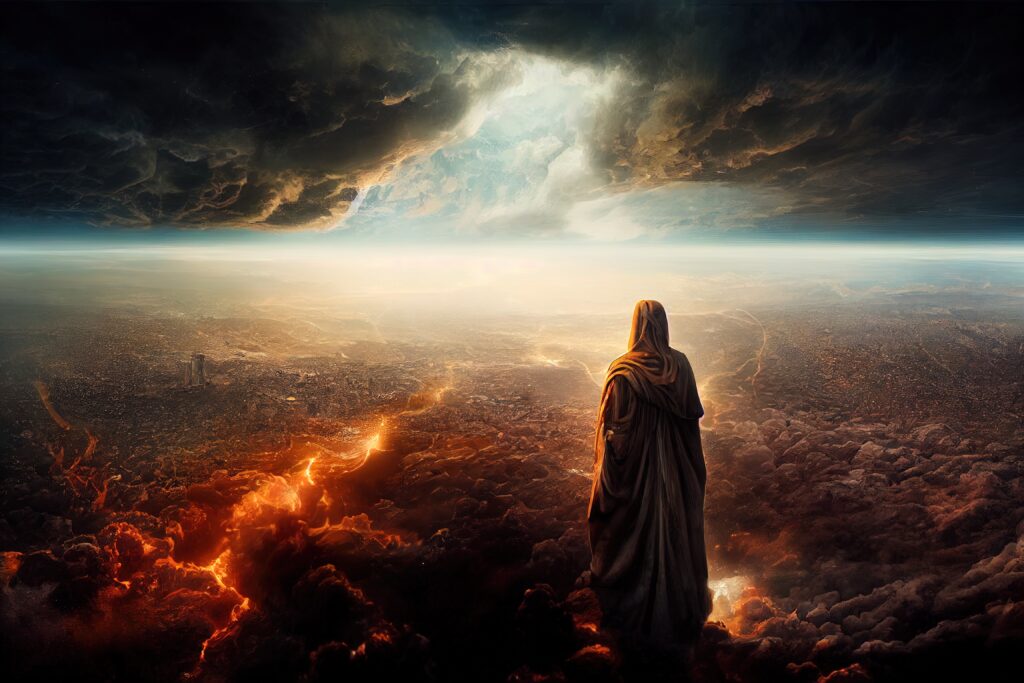
Restoration and Renewal
“Then I saw a new heaven and a new earth; for the first heaven and the first earth passed away, and there is no longer any sea. And I saw the holy city, new Jerusalem, coming down out of heaven from God, prepared as a bride adorned for her husband. And I heard a loud voice from the throne, saying, “Behold, the tabernacle of God is among the people, and He will dwell among them, and they shall be His people, and God Himself will be among them, and He will wipe away every tear from their eyes; and there will no longer be any death; there will no longer be any mourning, or crying, or pain; the first things have passed away. And He said, “Write, for these words are faithful and true.” – Revelation 21:1-5 NASB
We have been exploring the important symbolism around the New Jerusalem. Before we continue and because they play such a powerful role in this portrayal, we need a refresher on numbers. You’ll recall that 3 represents unity, most particularly as it relates to God, and 4 is the whole of God’s creation and often specifically represents humans as the pinnacle of creation. 7 is God’s number, denoting God-given rest and His completed work. Ten tells us something is comprehensively complete, while 12 represents God’s perfect kingdom of people. It is worth reminding ourselves that both 7 and 12 are combinations of 3 and 4, with seven being the addition of the two and twelve the result of multiplying them. 1000 is 10x10x10 or 10 cubed representing a union of completeness. In these chapters now under consideration, 12 is a dominant number, clearly denoting perfection as a gift to God’s people. For even greater symbolism, in this city, 12 is multiplied by a unified completeness, 10/3, to create a cube of absolute perfection as the symbol of the kingdom of God’s people. More on that to come.
Having completed the judgment scenes in Revelation 19 and 20, under inspiration John turns to the restoration, the renewal of all that sin has corrupted. The redeemed have been redeemed; those who rejected God’s consistent, loving pleas have tragically suffered the consequence of their choice as God, in a final act of love for them, honours their choice over His personal preference; the devil and his allies have experienced the ramifications of rebellion and rejection of God’s immense love; all that has been contaminated and corrupted by sin has been cleansed; God sets about recreating a home for His people.
There is so much wonderful imagery in the five opening verses of chapter 21 – symbolism that runs through Scripture like a golden thread. We have already spoken of the sanctuary imagery. Now, consider the concept of the new replacing the old. Three times in five verses the concept is repeated, and a threefold emphasis is common throughout scripture. There is no doubt that John is greatly impacted by the assurance that the old is gone and the new has begun. In Romans, Paul emphasised this essential step in the eradication of sin for all eternity: “the creation looks forward to the day when it will join God’s children in glorious freedom from death and decay.” Romans 8:21 NLT
Likewise, Peter saw that this restoration of the original order of things was essential to re-establish righteousness on the earth “But we are looking forward to the new heavens and new earth he has promised, a world filled with God’s righteousness.” 2 Peter 3:13 (Peter wrote this only months before his execution). The renewal reaches beyond the material to the spiritual.
The next significant thing that John notes is the absence of sea (v1). It has been suggested in the past that this declaration relates primarily to his separation from his fellow Christians that John felt on Patmos, but maybe there is more to it than that. To interpret this point literally creates a dilemma for the rest of the book. As we have mentioned from the beginning of our study, Revelation is a book of symbolic messages. Once we start switching between symbolism and literal meanings, we create confusion as personal opinions determine how one interprets each passage. If we hold the position that revelation is basically a book of symbols, the absence of sea has much greater relevance to John’s message. Throughout the book, the sea represents the origin of the beast power (see also Daniel 7:1-8; Isaiah 12:1; Rev 13:1-2). It has been a partner with the devil in generating the evil that has confronted God’s people throughout the ages. The sea’s symbolism as a cooperative beastly force, and its subsequent elimination recorded here by John, is particularly poignant as we recall our discussion of the sea of glass in Revelation 4. Ancient people were afraid of the tumultuous sea and frequently mentioned it as an uncontrollable force to be feared. It is likely then that this declaration by John provides us with assurance that not only is the source of evil removed, but also his collaborative and dangerous cohort of followers!
